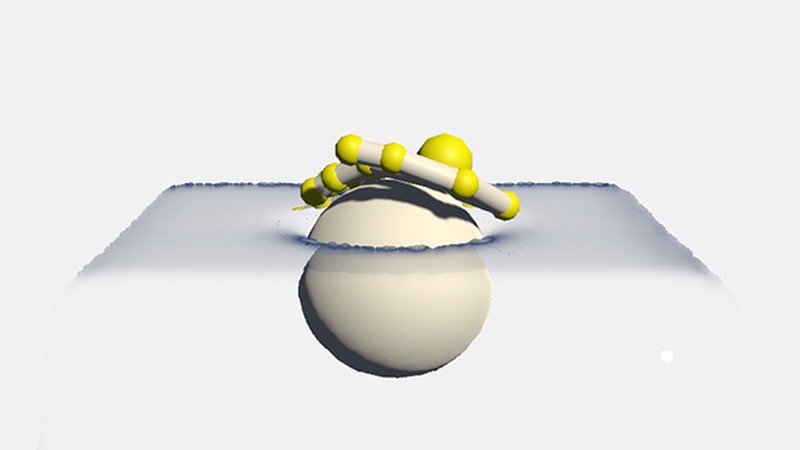Pseudo-haptics is a phenomenon in which users perceive force feedback that is not physically present, often due to mismatches between visual and physical sensations. In many previous studies, the objects affected by forces have mainly been solids, allowing practical calculations using basic physics simulation engines built into game engines. However, when the target is a fluid, more complex simulations are required, and it is necessary to carefully select methods suitable for real-time computation.
In this project, we developed a method to present the sensation of buoyancy when a user touches a solid object floating in liquid within a virtual 3DCG environment, using pseudo-haptics. Since the realism of the visual information presented is crucial for inducing pseudo-haptics, we employed Fluid-rigid Body Coupled Simulation, and attempted to precisely simulate the behavior of both solids and liquids. In addition, we induced pseudo-haptics by visually displacing the user’s virtual hand according to the buoyant force acting on the solid.
Results from a simple experiment suggested that even just high-precision calculation and visualization of fluid behavior can make participants feel buoyancy. Furthermore, adjusting the displacement of the virtual hand may enable the presentation of enhanced pseudo-haptics.

